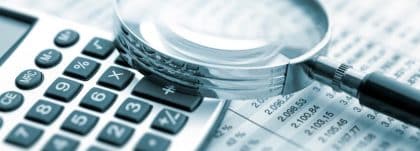What is FRS 102 lease accounting?
FRS 102 is the principal accounting standard in the UK and Republic of Ireland’s financial reporting regime. It dictates financial reporting requirements for entities not applying IFRS 16.
FRS 102 aims to provide a consistent and simplified framework for financial reporting, making it easier for small businesses to understand what’s required of them.
Changes to FRS 102 also include clearer outlines and requirements for lease accounting; which involves recording and reporting the financial impact of leasing activities.

How is FRS 102 changing?
As of 2026, FRS 102 will include a range of new and amended legislation around lease accounting, including:
- Some key simplifications (in-line with IFRS 16)
- On-balance sheet lease accounting for lessees
- Lease expenses now present as depreciation and interest
- Exemptions available for short-term or low-value asset leases
- No restatement of comparatives required.

Featured Guide
Lease accounting: a simple guide to FRS 102
Get up to speed with all current and new legislation surrounding FRS 102 and find out what you need to know about lease accounting – including lease accounting solutions.
How to identify a lease
Unsure whether a contract contains a lease? If all the criteria below apply to your situation, you’re likely dealing with a lease.
- There is an identified asset (e.g. rented studio)
- The customer can financially benefit from using it
- The customer can direct how it’s used
- The supplier can’t dictate how it’s operated
- The customer can design the asset to determine how they use it

Complying with FRS 102 lease accounting standards in 7 steps
As changes to FRS 102 come into play, it’s vital you take action to establish and maintain compliance with this legislation.
To get you started, here’s our 7-step framework for successful lease accounting management.
-
1. Begin with a comprehensive lease audit
The first step to lease accounting compliance is to outline what your current lease activities look like with a comprehensive audit.
This audit should aim to review and record how you handle:
- lease procurement
- data capture
- lease management
- accounting and reporting practices.
This first step gives you and your team a clear idea of how you currently manage lease accounting and reporting; basically, it gives you a strong starting point to enact strategic planning.
-
2. Deep-dive into FRS 102
Conduct an initial assessment of FRS 102 to understand the potential effects of the new standard on you and your organisation.
Review the Financial Reporting Council’s ‘Amendments to FRS 102’ report and begin evaluating the impact it will have on your accounting practices, including:
- financial statements
- financial metrics
- key performance indicators (KPIs)
- established accounting policies
- processes and tax considerations.
Pay particular attention to FRS 102 Section 20, which dictates disclosure requirements. Do this before you start capturing data, to ensure you can satisfy all the disclosure requirements.
-
3. Start Capturing Data
Once you have a strong understanding of all FRS 102 requirements, it’s time to begin reviewing your lease contracts and capturing, extracting and processing relevant data.
Because changes to FRS 102 require you to bring leases onto the balance sheet, you’ll be dealing with knock-on effects like:
- Managing a lot more lease data than previously
- An increase in disclosure requirements for lessees
- An impact on your organisation’s financial statements.
-
4. Plan for success
Before you begin taking action, set aside some time to define what successful implementation looks like for your organisation – and how you’re going to make that happen.
Consider establishing how and when you will:
- Execute a rollout strategy
- Carry out testing to iron out any kinks
- Train your team on new legislation and best practice
- Monitor outcomes during the transition phase.
Once you’ve got the milestones laid out, it’s time to devise a new process architecture that aligns with the required changes. You may wish to think about establishing governance structures, data standards, and models.
-
5. Leverage software solutions
While FRS 102 is designed to make financial accounting requirements clearer and easier to abide by, it does make calculating and reporting on leases far more complex.
Thankfully, there are plenty of software solutions out there – many of which are already well ahead of the game and poised to help you ensure compliance with FRS 102.
Finding the right software for your needs shouldn’t be an afterthought. Make it a priority to find your ideal lease accounting software partner; it’ll make adhering to requirements easier from the very beginning.
-
6. Establish new workflows and get started
Once you’ve got your ideal system in place and everyone’s ready to go, it’s time to start producing the necessary reports and financial statements under the new standard.
Expect some snags and be ready to review outcomes and adjust timelines and workflows accordingly.
-
7. Establish a Long-Term Lease Management Strategy
To maintain compliance in the long term, you’ll need to develop a sustainable lease accounting strategy.
In practice, this might look like setting up:
- Regular, ongoing audits of lease agreements and accounting management practices
- Ongoing training for staff, including refreshers for existing team members
- Fostering a culture of continuous improvement of lease accounting processes; e.g. Opening the floor to staff for ideas on how to improve processes.
Frequently Asked Questions (FAQs)
Learn more about lease accounting management, FRS 102, and how financial reporting standards impact lease accounting.
-
Lease accounting management involves managing and reporting on lease agreements for real estate, equipment, and other assets.
In the UK and the Republic of Ireland, the requirements around lease accounting (including reporting requirements) fall under FRS 102. -
FRS stands for Financial Reporting Standard and refers to legal standards dictated by The Financial Reporting Council (FRC). FRS 102 is a type of financial reporting standard used in the UK and the Republic of Ireland.
-
In the UK and the Republic of Ireland, changes to FRS 102 will be in effect for accounting periods commencing on or after 1st January 2026.
In March 2024, the Financial Reporting Council (FRC) announced significant amendments to FRS 102, an existing standard used by an estimated 3.4 million businesses.
-
IFRS 16 is an International Financial Reporting Standard issued by the International Accounting Standards Board (IASB).
IFRS 16 is a lease accounting standard that requires companies to recognise leases on their balance sheets, alongside other legislative requirements.
One of the reasons FRS 102 required updating was to bring the legislation more clearly in line with IFRS.
-
UK GAAP stands for Generally Accepted Accounting Practice in the UK. It’s the overall body of regulation that establishes how company accounts must be prepared in the UK.
Read more about FRS 102 and lease accounting

Blog Article
FRS 102: What might change for revenue and leasing

Blog Article
IFRS 16 Leases: what the standard means for businesses

Blog Article





